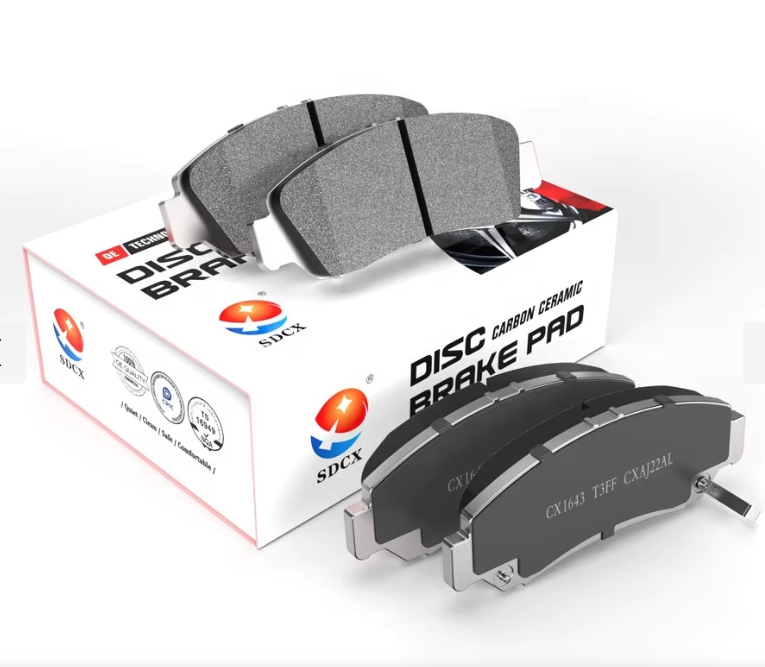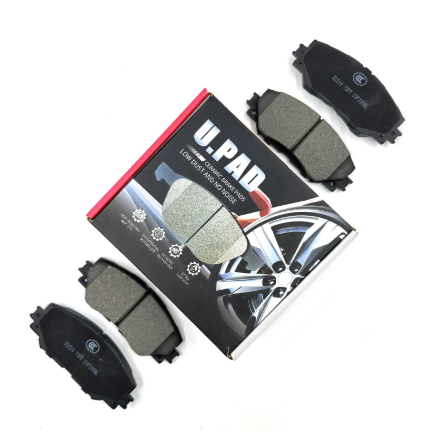Mastering the Art of Professional Brake Maintenance
The importance of proper brake pad installation cannot be overstated when it comes to vehicle safety and performance. Whether you're a seasoned mechanic or an automotive enthusiast, understanding the intricacies of brake pad installation is crucial for ensuring optimal braking performance and driver safety. This comprehensive guide will walk you through everything you need to know about installing brake pads correctly, from preparation to final testing.
A properly executed brake pad installation not only extends the lifespan of your braking system but also ensures consistent stopping power when you need it most. With the right knowledge and attention to detail, you can achieve professional-level results that will keep your vehicle operating safely for thousands of miles.

Essential Preparation Steps for Brake Pad Replacement
Gathering the Required Tools and Materials
Before beginning any brake pad installation project, it's essential to have all the necessary tools and materials at hand. You'll need a jack and jack stands, lug wrench, brake caliper tool, wire brush, brake cleaner, torque wrench, and of course, the correct replacement brake pads for your vehicle model. Having everything prepared beforehand ensures a smooth installation process and helps prevent unexpected delays.
Additionally, consider having brake lubricant, replacement hardware if needed, and safety equipment such as gloves and eye protection. The quality of your tools can significantly impact the precision of your brake pad installation, so invest in reliable equipment that will serve you well.
Vehicle Safety and Workspace Setup
Creating a safe working environment is paramount when performing brake pad installation. Park your vehicle on a level surface, engage the parking brake, and properly position wheel chocks. Ensure adequate lighting and ventilation in your workspace, as brake dust can be harmful if inhaled.
Take time to thoroughly clean your workspace and organize your tools before beginning. This preparation not only enhances safety but also improves efficiency during the installation process. Remember to document the original position of components as you disassemble them to ensure correct reassembly.
Technical Aspects of Brake Pad Installation
Proper Caliper Inspection and Maintenance
Before installing new brake pads, carefully inspect the brake caliper for signs of wear, damage, or sticking. Clean the caliper mounting brackets thoroughly and check for proper sliding action. Any resistance in caliper movement can lead to uneven brake pad wear and reduced braking performance.
Pay special attention to the caliper pistons, ensuring they move freely and show no signs of corrosion or damage. If necessary, carefully clean and lubricate the caliper slides with high-temperature brake grease to maintain smooth operation.
Critical Installation Procedures
During brake pad installation, proper positioning and alignment are crucial. Ensure the brake pads sit squarely in the caliper bracket and make full contact with the rotor surface. Check that any anti-rattle clips or shims are correctly installed and that the brake pad wear indicators are properly oriented.
Apply brake lubricant sparingly and only to the designated contact points. Over-application can lead to contamination of the brake pad surface and reduced braking efficiency. Torque all bolts to manufacturer specifications using a calibrated torque wrench.
Post-Installation Procedures and Testing
Breaking in New Brake Pads
Proper break-in procedures are essential following brake pad installation. This process, also known as bedding in, creates a transfer layer of pad material onto the rotor surface, optimizing braking performance. Follow a specific sequence of moderate stops from varying speeds to properly condition the new pads.
During the break-in period, avoid panic stops or prolonged braking unless absolutely necessary. This allows the brake pads to gradually adapt to your specific driving conditions and achieve optimal performance.
Performance Verification and Maintenance
After completing the brake pad installation, conduct thorough testing to ensure proper operation. Begin with a static test of pedal feel and travel, followed by low-speed testing in a safe area. Listen for any unusual noises and pay attention to pedal response and braking effectiveness.
Establish a regular maintenance schedule to monitor brake pad wear and system performance. Regular inspections can help identify potential issues before they become serious problems, ensuring continued safe operation of your vehicle's braking system.
Frequently Asked Questions
How Often Should Brake Pads Be Replaced?
Brake pad replacement intervals vary depending on driving conditions, vehicle type, and pad material. Generally, brake pads should be inspected every 12,000 miles and replaced when they reach approximately 3-4mm thickness. Some vehicles have built-in wear indicators that will produce an audible warning when replacement is needed.
What Are the Signs of Improper Brake Pad Installation?
Common indicators of incorrect brake pad installation include squealing or grinding noises, vibration in the brake pedal, uneven braking performance, and premature pad wear. If you experience any of these symptoms after brake pad installation, have the system inspected by a qualified professional immediately.
Can I Mix Different Types of Brake Pads?
It's not recommended to mix different types or brands of brake pads on the same axle. This can lead to uneven braking performance and potentially dangerous driving conditions. Always replace brake pads in pairs and use the same type and brand for optimal performance and safety.

